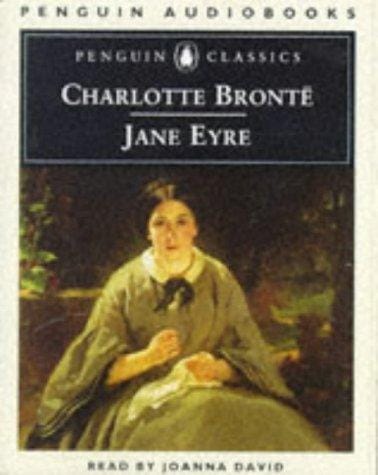Rediscovering Jane Eyre: Why the Penguin Classics Edition Belongs on Your Shelf
Discover why Charlotte Brontë's Jane Eyre, in the Penguin Classics edition, remains essential reading, with plot, themes, character insights, and edition benefits.

Introduction to Jane Eyre and Penguin Classics
Few nineteenth-century novels have enjoyed the enduring popularity of Charlotte Brontë’s "Jane Eyre". First published in 1847, the story of an orphaned governess who insists on her own worth and moral agency still captivates new generations. The Penguin Classics edition packages that magnetic narrative with scholarly guidance and reader-friendly design, making it an ideal gateway to Brontë’s world.
Plot Summary: A Journey from Gateshead to Ferndean
"Jane Eyre" charts its heroine’s life in five distinct settings: the loveless Gateshead household, the harsh Lowood School, the romantic yet mysterious Thornfield Hall, the austere Moor House, and finally the restorative Ferndean Manor. Over the course of the novel Jane confronts poverty, cruelty, temptation, and despair, yet she never abandons her quest for dignity, independence, and authentic love—a quest that leads her back to a humbled but hopeful Edward Rochester.
Key Themes That Resonate Today
Female Independence and Identity
Long before feminism became a named movement, Brontë portrayed a female protagonist who demands the right to think, decide, and feel for herself. Jane’s oft-quoted declaration—"I am no bird; and no net ensnares me"—remains a rallying cry for personal autonomy. Modern readers see in her struggles an early articulation of gender equality and self-realization.
Social Class and Morality
The novel exposes rigid Victorian hierarchies through Jane’s outsider status. Whether she is bullied by wealthy cousins or patronized by employers, the heroine measures worth by moral integrity rather than lineage. Penguin’s footnotes underscore how Brontë critiques class prejudice without ignoring the material realities that shape her characters’ fates.
Love, Passion, and Equality
At the heart of "Jane Eyre" lies an unconventional romance that balances fiery passion with moral principle. Jane refuses to become Rochester’s mistress, yet she also rejects a loveless marriage to the pious St. John Rivers. Her eventual union with Rochester is grounded in equality—a radical concept in 1847 and still compelling today.
Why Choose the Penguin Classics Edition?
With multiple versions of "Jane Eyre" on the market, readers often wonder which to buy. The Penguin Classics edition distinguishes itself through authoritative text, comprehensive notes, and thoughtful design choices that enhance both study and pleasure reading.
Authoritative Text and Notes
Penguin bases its copy on the definitive Clarendon edition, meticulously collated against Brontë’s manuscripts. Explanatory notes clarify archaic terms, biblical references, and cultural allusions, allowing modern audiences to appreciate subtleties that might otherwise be lost.
Contextual Introductions
An engaging critical introduction situates the novel within the Brontë family history, the religious debates of nineteenth-century Britain, and the era’s changing attitudes toward gender and empire. For students writing essays—or casual readers hungry for background—these contextual essays are invaluable.
Readable Design
Pleasant typography, durable binding, and a balanced page layout reduce eye strain during long reading sessions. The edition also includes a biographical chronology and a select bibliography that point the curious toward deeper scholarship.
Character Analysis Worth Revisiting
Jane Eyre: A Proto-Feminist Heroine
Jane evolves from a maltreated child into a confident woman who stakes her happiness on moral consistency. Her psychological realism—expressed through Brontë’s pioneering use of first-person narration—invites readers to experience every emotional crevice, from passionate rebellion to spiritual contemplation.
Edward Rochester: Byronic Yet Vulnerable
Rochester embodies the archetypal Byronic hero—dark, brooding, and haunted by secrets—yet his eventual vulnerability prevents caricature. Through blindness and loss, he learns humility, enabling the equitable partnership Jane requires. Penguin’s annotations explore literary influences, from Lord Byron to folk legends, that shaped this complex figure.
St. John Rivers and Moral Idealism
Often overshadowed by Rochester, St. John Rivers represents religious zeal taken to an extreme. His proposal to Jane offers spiritual purpose but suppresses emotional authenticity. The contrast between St. John’s duty-driven life and Jane’s holistic pursuit of joy prompts timely reflections on balancing career, faith, and personal fulfillment.
Tips for First-Time Readers
Approach "Jane Eyre" as a bildungsroman, a gothic mystery, and a social critique; the novel rewards each lens. Keep track of the five settings to observe Jane’s growth, and don’t skip the introduction—Penguin’s spoiler warnings allow you to read background material without ruining plot twists. Finally, savor Brontë’s prose aloud; its cadence reveals emotion that silent reading can miss.
Conclusion: A Timeless Classic for Modern Readers
More than 175 years after publication, "Jane Eyre" still challenges conventions, sparks debate, and offers profound emotional satisfaction. The Penguin Classics edition amplifies those qualities with scholarly rigor and reader-centric design. Whether you’re exploring Victorian literature for the first time or returning to a beloved favorite, this edition earns a permanent place on any carefully curated bookshelf.



